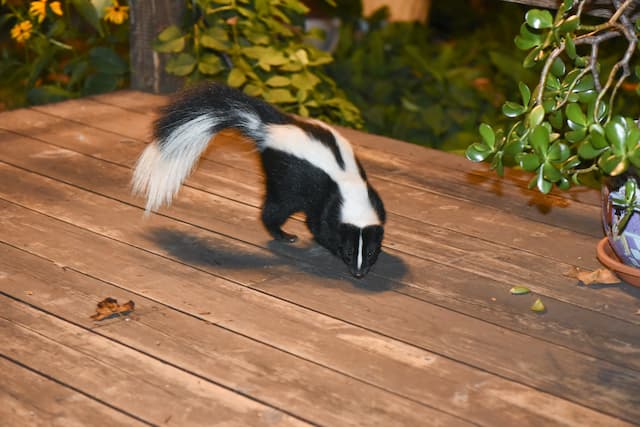Skunks occupy a special position in the urban flora and fauna due to their distinctive appearance and the lingering odour of their defensive spray. When these organisms invade human habitats, a crucial decision must be made regarding how to handle their presence. The solution lies in the humane removal of skunks by professionals, a choice that upholds ethical considerations while effectively managing urban wildlife encounters.
A Fragile Coexistence
Urban spaces are shared territories in which the distinctions between human and animal habitats are frequently blurred. The adaptable nature of skunks allows them to navigate this shared landscape in search of shelter and sustenance. As stewards of the environment, it is incumbent upon us to find methods to coexist peacefully with these organisms, recognizing their essential role in the urban ecosystem.
Comprehending the Humane Method
The foundation of humane skunk removal is a comprehensive comprehension of the animals’ behaviour and needs. It incorporates a comprehensive strategy that prioritizes the skunks’ well-being in addition to eviction. This approach acknowledges that skunks, like all other species, have an inherent right to exist and flourish in their natural environments, even in urban areas.
Effective Expertise
Specialists in skunk removal are trained to use techniques that minimize stress and damage to the animals. Their expertise enables them to evaluate lair sites, identify entry points, and design skunk-friendly removal strategies. By employing humane exclusion techniques and one-way doors, these professionals ensure that skunks are safely and humanely expelled from the area without causing any damage.
The Pitfalls of Do-It-Yourself Removal
Despite the allure of do-it-yourself skunk eradication methods, they frequently result in unintended consequences. Trapping and relocating skunks can disrupt their social structures, separate mothers from their offspring, and expose them to potentially dangerous environments. Contrary to the very principles of a humane approach, the resulting tension and disorientation can be detrimental to the animals’ well-being.
Protecting Skunk Families
The protection of skunk families is one of the most compelling arguments for hiring a professional to remove skunks. As with all wildlife, skunks have a complex family structure. Mothers care for their young within the home, and premature separation can have disastrous consequences. Professional removal experts ensure that skunk families remain cohesive, allowing young skunks to mature under their mothers’ care.
A Long-Term Approach
The goal of humane skunk removal is not just immediate eviction, but also the promotion of a long-term solution. By sealing entry points and instituting preventative measures, professional removal experts contribute to the creation of a hostile environment for skunks. This sustainable approach fosters coexistence that extends beyond a single encounter, to the benefit of both householders and skunks.
Conservation of Urban Biodiversity
Each species contributes to the delicate equilibrium of biodiversity in urban environments, which are complex ecosystems. With their function in pest control and nutrient cycling, skunks are essential to maintaining this equilibrium. Choosing humane skunk removal protects this delicate balance, allowing urban biodiversity to prosper and flourish.
A Compassionate Selection
Choosing professional skunk eradication is ultimately an ethical and compassionate decision. It demonstrates a commitment to respecting the lives and behaviours of animals who share our environments. By adopting a humane approach, we create a narrative of coexistence that reflects our duty as environmental stewards. In this narrative, skunks are not mere intruders; they are fellow residents of the urban fabric, and their eradication is conducted with empathy, understanding, and a dedication to a harmonious urban ecosystem.
